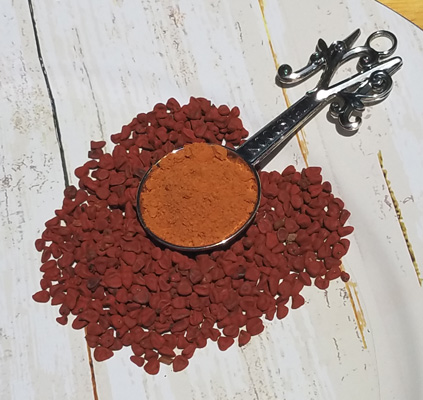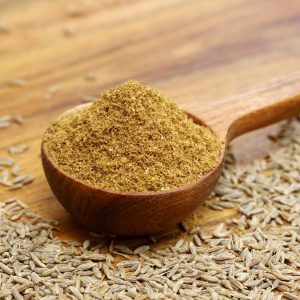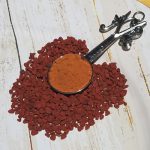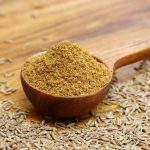GnomeVictor
Brown Rice

Brown rice is so good! I love white rice, but once I tried brown rice, I got hooked. Brown rice is high in fiber and considered a whole grain. It has a nutty aroma, a chewy texture, and many essential nutrients. I like to season my rice so it saves me from having to make beans or something else to go with the rice. I am using chicken bouillon but if you are a vegetarian, you can always use vegetable bouillon or just salt, just increase the amount of salt to at least 1 tsp. I prefer to use long grain brown rice, but if you prefer shorter grain, just increase the amount of water to 2 ½ cups of water per cup of rice. This recipe will make 3 cups of rice.
When cooking brown rice, patience is a virtue. If you try to cook your rice fast, it will dry up and will not cook all the way. Nobody likes crunchy uncooked rice!
Ingredients
- 2 cups brown rice long grain
- 4 1/2 cups water
- 1 tbsp chicken bouillon
- 1/2 tsp sea salt
- 1 bay leaf
- 1/4 cup olive oil
Instructions
-
Put the water to boil in High heat.
-
Add the chicken bouillon, salt and bay leaf in the water while you boil it and make sure you stir it until it dissolves in the water.
-
Once the rice is boiling, add the rice, cover the pot and reduce to Medium heat.
-
Cook for 30 minutes or until most of the water is absorbed by the rice.
-
Add the olive oil and stir, making sure all the oil is covering all the rice.

-
Cover the pot with the lid and cook the rice for around 15 more minutes or until the rice is completely cooked.
-
Remove the bay leaf before serving.
Recipe Notes
There you go! Delicious brown rice that you will want to eat every day!
Annato (Achiote)
Annato (Achiote)
Bixa orellana
Achiote, also known as Annatto, is the seed from the fruit of the evergreen shrub Bixa orellana. The reddish seeds are found in dry form, powder, paste or steeped in cooking oil or lard. The shrub is native to the tropical parts of the Americas including Mexico and the Caribbean. Achiote is an integral part of a spice mix called Sazón, very common in Latin cuisine.
Achiote is used to color confectionery, butter, smoked fish and cheeses like Cheshire, Leicester, Edam, and Muenster. Its scent is described as “slightly peppery with a hint of nutmeg” and flavor as “slightly nutty, sweet and earthy peppery”. It is mainly used to add color to your food. In many Latin American kitchens, achiote is used to color rice, soups, stews, and meats. They may be added directly to a cooking liquid or infused in hot water until the desired color is obtained and then used for stocks or coloring rice. It is also common to fry the seeds in oil for a few minutes (best done in a covered pan as the hot seeds jump), then discard the seeds and use the oil. It is excellent to help meats like chicken and pork to get a darker color when roasting or grilling. The seeds are also particularly associated with Filipino cuisine, in dishes like; ukoy, shrimp and sweet potato fritters; pipian, chicken and pork in an annatto oil sauce; and kari-kari, a brightly coloured vegetable and oxtail stew. Due to its main purpose of coloring food, paprika, turmeric or a mix of the two is a decent substitute.
It is also known as:
- English: Achiote, Anatta, Annato, Annotta, Aploppas, Arnotta, Arnotto, Orellana, Orlean, Orleana , lipstick tree
- French: rocou, roucou
- Italian: annatto
- Spanish: achiote, achote, annatto, onotto, urucu
- Portuguese: anato, urucú, açafroa-do-Brasil, urucum
- Caribbean: bija, bijol, foucou
- Indian: latkhan, sendri
- Tagalog: achuete, atsuwete, achwete, atsuete, echuete
- German: annatto, orleanstrauch
- Vietnamese: Hột điều màu, Điều nhuộm
- Mandarin: yan zhi shu

Flavor Profile



Cumin
Cumin
Cuminum cyminum
Cumin is the dried seed of the herb Cuminum cyminum, a plant in the parsley family. The seed can be used whole or ground in a powder, which imparts a stronger flavor than when used whole. The flavor is accentuated when the seeds are toasted and then ground. It has a distinctive, slightly bitter yet warm flavor. It imparts an earthy, warming and aromatic character to food, making it a staple in certain stews and soups, as well as spiced gravies such as curry and chili. It is also used as an ingredient in some pickles and pastries. It is often confused with caraway and anise.
Cumin can be found in some cheeses, such as Leyden cheese, and in some traditional breads from France. Cumin is used mainly where highly spiced foods are preferred. It features in Indian, Eastern, Middle Eastern, Mexican, Portuguese and Spanish cuisines. Cumin can be an ingredient in chili powder (often Tex-Mex or Mexican-style), and is found in achiote blends, adobos, sofrito, garam masala, curry powder, bahaarat and is used to flavor numerous commercial food products. In South Asian cooking, it is often combined with coriander seeds in a powdered mixture called dhana jeera.
It gives a bite when added to rice or corn muffins. Heat some garlic and cumin with olive oil and pour over your vegetables or potatoes. Cumin works great on marinades for beef, chicken, turkey, lamb or pork. Add to your beans or stews. Do you have a recipe that requires cumin, but are out of it? You could replace it with caraway seeds, ground coriander, chili powder, garam masala, curry powder or even taco seasoning.
It is also known as:
- English: Anise Acre, Cumin Acre, Cummin, Sweet Cumin and White cummin
- French: cumin
- German: Kreuzkümmel, Romische Kümmel
- Italian: cumino
- Spanish: comino
- Portuguese: cominho
- Arabic: kammun, kemouyn
- Indian: jeera, jeraka, jira, zeera, zira, sufaid…, safed…(white), kala…(black), kalonji (cf Nigella)
- Indonesian: (d)jinten
- Malay: jintan puteh
- Sinhalese: cheeregum, jeera, su(du)duru
- Tamil: cheeregum
- Turkish: Kimyon, Acem Kimyonu, Kemmon
Flavor Profile





